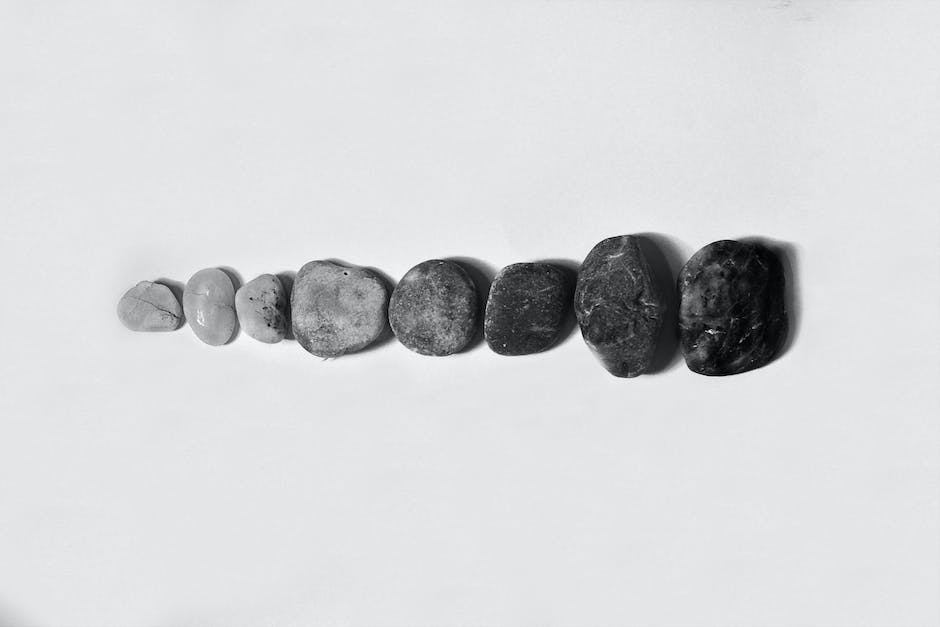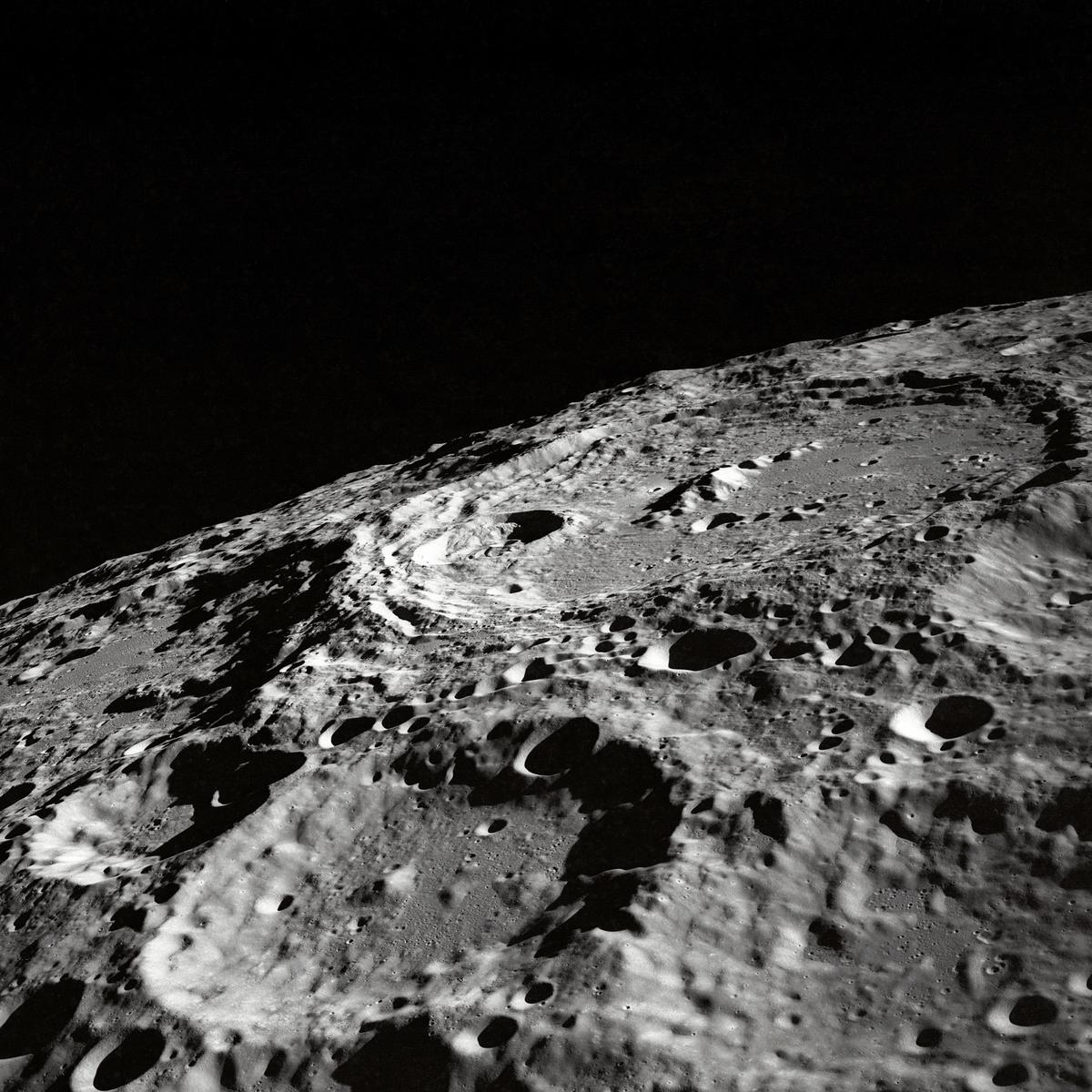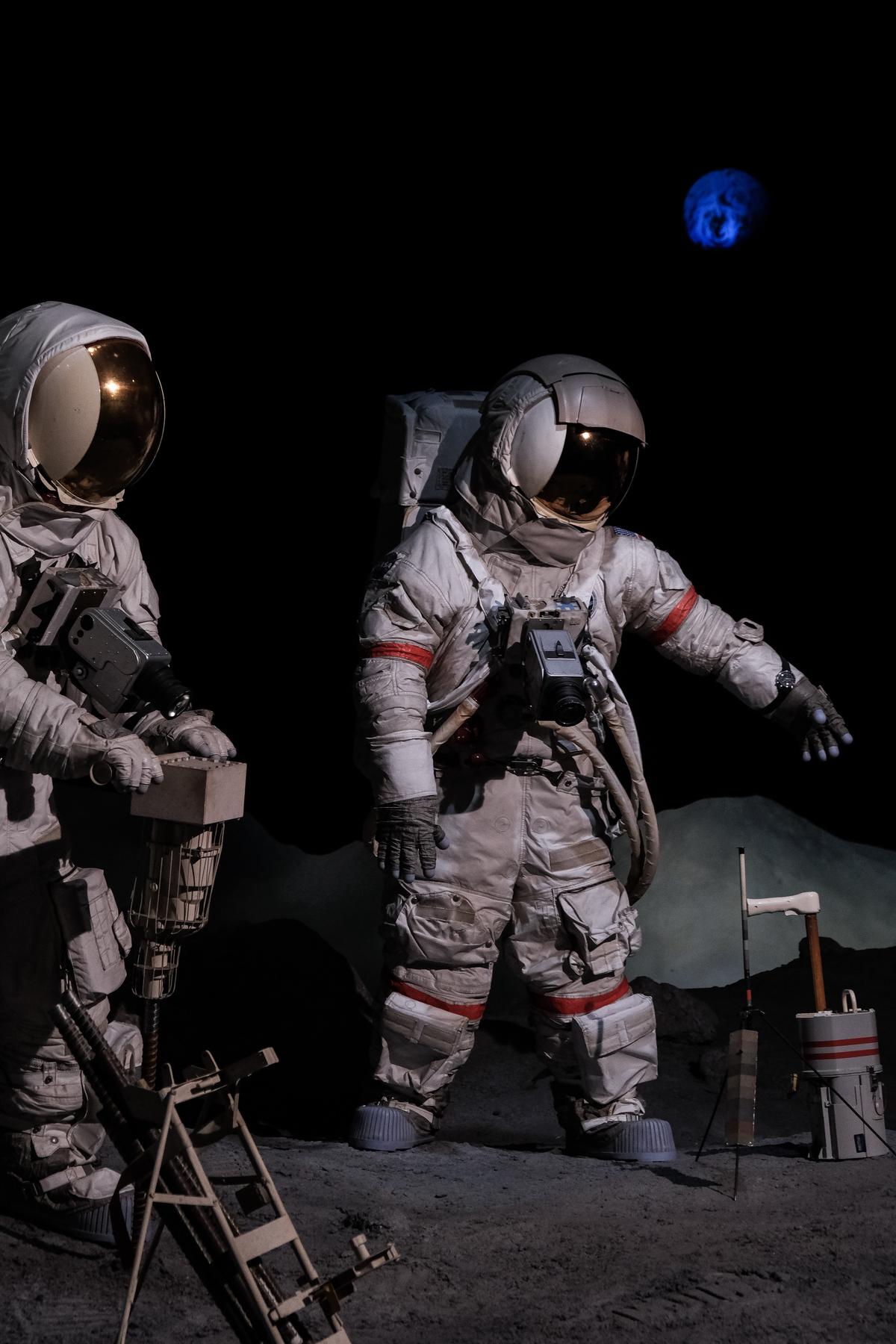With its ethereal glow that illuminates the night sky, the Moon has fascinated humankind for thousands of years. But beyond its beauty and mystique, the Moon offers a rich reservoir of rocks–foreign yet familiar–that provide unique insights into our Planet, solar system, and beyond. Importantly, these lunar rocks, with their diverse composition and intriguing origin, incite questions fundamental to our very existence. This treatise delves into the fascinating world of moon rocks, from their origin and composition to the scientific discoveries they’ve sparked. We’ll journey through history, recounting the bold Apollo missions that first returned these precious lunar samples, explore the intricate methods scientists employ to study them, and look forward to the future of moon rock inquiries as we continue to seek answers to some of the most compelling questions in the Universe.
Contents
Understanding Moon Rocks: Origin and Composition
Understanding Moon Rocks: Origin and Composition
Moon rocks are any rock fragments or particles that originate from the moon. These samples provide scientists with invaluable information about lunar geology, including the moon’s origin, history, and the processes underlying its formation and evolution.
The four main types of moon rocks are basalts, anorthosites, regolith breccias, and impact melt breccias. Basalts, derived from volcanic activities, are the most common rock samples, accounting for nearly half of all samples derived during Apollo missions. These rocks comprise of large amounts of an iron- and magnesium-rich group of minerals known as mafics. Compared to Earth’s basalts, lunar basalts have higher concentrations of iron and are devoid of hydrated minerals due to the moon’s tectonic inactivity.
Anorthosites, which make up the relatively brighter and older part of the lunar surface (also known as lunar highlands), are formed by the prolonged accumulation and floating of plagioclase minerals on the moon’s initial “magma ocean”. What marks these rocks as unique is their high aluminum content and absence of quartz, which is a common component of their Earth counterparts.
Regolith breccias are another type of moon rock formed by the aggregation of small fragments of rock and mineral grains that have been fused together due to the intense heat and pressure generated by meteor impacts. Impact melt breccias are somewhat similar but have experienced an extreme melting event due to a high-speed asteroid or comet impact, leading to a mixture of molten rock and solid fragments.
Defining Characteristics of Lunar Rocks
Notably different from their Earth-quarried counterparts, lunar rocks offer unique facets worthy of more in-depth exploration. To illustrate this, these extraterrestrial stones show zero evidence of organic matter or fossilized remnants, affirming the moon’s reputation as a desolate, uninhabited celestial body.
An interesting distinction lies in the weathering of these rocks. Earth stones usually display weathering signs brought on by exposure to air and water. On the contrary, Moon rocks, subjected only to solar winds and tiny meteorites, develop an unusual variant of weathering. This exposure results in a dark, shiny external layer often referred to as ‘patina’.
Additionally, a trademark of moon stones is the existence of ‘zap pits’- minute craters that form due to swift micro-meteorite impacts. These specific marks are often missing in Earth rock samples, thanks to our planet’s shielding atmosphere.
Progressive research on these lunar rocks continues to deepen our grasp on the moon’s history and makeup, and indirectly, the evolution timeline of our solar system. As countless moon rock samples are somewhat untouched or conserved, these hold a rich potential to resolve significant lunar inquiries as technological advancements catch up.

The Apollo Moon Rock Missions
Exploring the Impacts of the Apollo Moon Rock Missions
The chained sequence of Apollo Moon Rock Missions has dramatically advanced our comprehension of the moon’s geological structure. Within the period of 1969 to 1972, NASA’s Apollo program initiated six successful manned spaceflights to the lunar surface via Apollo missions 11, 12, 14, 15, 16, and 17. These planetary voyages successfully collected samples of lunar rocks, transporting them back to Earth for extensive study. The knowledge mined from these lunar rocks has delivered priceless perspective on aspects including lunar geology, planetary development process, and surprisingly, the ancestral history of Earth itself.
The Lunar Missions and Moon Rock Retrieval
Upon the successful launch of Apollo 11 on July 16, 1969, astronauts Neil Armstrong and Edwin “Buzz” Aldrin were able to walk on the lunar surface and gather samples of the Moon rocks. The mission returned to Earth with 47.5 pounds of lunar material that contained rocks, core samples, pebbles, sand, and dust from the lunar surface.
Apollo 12, landing in November 1969, brought back 75 pounds of lunar samples. This mission was particularly significant as it made precision landing on the Moon in an area known as the Ocean of Storms. The samples obtained included basaltic rocks and regolith, contributing to our understanding of volcanic activity on the Moon.
Apollo 14, manned by Alan Shepard and Edgar Mitchell, was launched in January of 1971 and returned with 94 pounds of lunar samples. This was the first mission to perform material experiments on the lunar surface itself.
Apollo 15 initiated the practice of longer stays on the Moon and included a greater emphasis on scientific activities. The mission brought back an even larger array of lunar samples, totaling 169 pounds, including the famous “Genesis Rock,” which was determined to be a piece of the Moon’s original crust.
Apollo 16, launched in April 1972, landed in the lunar highlands and brought back 209 pounds of samples. During this mission, samples were collected that have been key to understanding volcanic activity on the Moon.
Finally, the Apollo 17 launched in December 1972 which was the final Apollo mission and also the most scientifically comprehensive. The astronauts’ geological fieldwork yielded 243 pounds of lunar samples, marking the largest haul of Moon rocks from a single mission.
Unraveling Lunar Mysteries: Moon Rock Studies
From 1969 to 1972, the six missions launched under the Apollo program successfully brought back a bounty of 842 pounds (382 kilograms) of valuable lunar samples, including rocks, core samples, pebbles, sand, and dust. This celestial treasure has since played a pivotal role in advancing our understanding of our nearest celestial neighbor. Examination of these samples has given scientists insights into the Moon’s age, geological history, the nature of its surface, and even its distance from Earth. Additionally, these samples have hinted at the possibility that the Moon’s interior may be more geologically diverse than previously thought.
Each sample collected during the Apollo missions has acted as a gold standard for any moon rock study undertaken since then. The lunar rocks, which originated from various regions across the Moon’s surface, have allowed scientists to extrapolate crucial information about the Moon’s geological processes and traits never known or fully understood before.
Aside from initial findings, continued preservation and detailed analysis of these Apollo-era Moon rocks have proven to be the gifts that keep on giving. As scientific techniques have advanced considerably since the 1970s, they have allowed new layers of understanding to be gleaned from these precious lunar pieces. Over half a century later, these samples continue to be instrumental in lunar research, shaping our knowledge base and influencing plans for upcoming missions to the Moon and beyond.

Analysis and Research on Moon Rocks
The Significance of Moon Rock Sampling and Collection
Gathering and studying lunar samples is a critical endeavor in illuminating the complexities of the Moon’s geology and history and, by extension, that of the solar system. The numerous trips made by the brave Apollo astronauts from 1969 to 1972 resulted in more than 800 pounds of Moon rock being collected directly from its alien surface. Over time, they have proven to be priceless sources of data, offering extensive knowledge about the Moon’s composition, and the geological processes that have shaped its lunar landscape.
Analytical Techniques for Moon Rock Evaluation
Several techniques are employed by scientists to analyze moon rocks. Firstly, age-dating techniques are used to determine the age of these precious samples. Techniques such as radiometric dating, which rely on the rate of decay of radioactive isotopes within the rock, help to determine its age and thus, provide insights into the timeline of lunar geological activity.
Additionally, chemical analyses are used to investigate the composition of the moon rocks. These include techniques such as spectroscopy, where the rock is exposed to specific wavelengths of light and the way it interacts gives clues to its chemical structure. In addition to these, petrographic studies analyze the overall texture, structure, and mineral content of the rock, providing geologists with information on the rock’s formation history and processes it has undergone since formation.
Microscopic analysis is also crucial for studying moon rocks. Through methods such as Scanning Electron Microscopy (SEM) and Transmission Electron Microscopy (TEM), the minerals, grains, and textures within the rocks can be visualized in very high details. This allows scientists to not only discover the rock’s micro-features but also to examine their spatial relationships to each other.
Major Research Institutions in Moon Rock Studies
There are several research institutions globally committed to studying moon rocks. The NASA Johnson Space Center in Houston, Texas is the primary facility where majority of the moon rocks are kept and curated. Scientists across the world request samples from this collection for their research.
Also noteworthy is the Field Museum in Chicago which has been actively involved in lunar rock research. They are famous for their research which showed that water could have existed on the moon.
The Lunar Planetary Laboratory at the University of Arizona is another institution that is renowned for its moon rock studies. They analyze moon rock samples to conduct studies on lunar volcanism and the lunar interior as a whole.
Not just limited to the USA, international facilities such as the Institute of Lunar and Planetary Science in China are conducting comprehensive studies on moon rocks, reflecting global interest in this field of study.
Unfolding the Lunar Geological History
Over the years, the study and examination of moon rocks have uncovered the moon’s complex geological past. As modern technologies advance, our capacity to scrutinize these rocks enhances, unveiling groundbreaking developments in planetary geology and astrobiology. The implications of moon rock studies are profound, offering insights into the processes that not only shaped the lunar surface but also contributed to the way we perceive our planet and the solar system.

The Scientific Discoveries from Moon Rock Studies
Noteworthy Insights Gained from Moon Rock Studies
The examination of moon rocks has been pivotal to several scientific revelations that deepened our comprehension of lunar and terrestrial geology, planetary formation, and the solar system’s history. A significant insight was obtained by dating moon rocks, the oldest one being approximately 4.5 billion years old. This finding played a key role in identifying the age of the solar system and understanding the sequence of planetary formation.
Furthermore, the chemical makeup of moon rocks presented evidence of a turbulent early solar system. This evidence supports theories about the Late Heavy Bombardment – a time characterized by an extraordinary rise in asteroid impacts on the inner planets.
Understanding Earth through Moon Rock Studies
Moon rocks have played an essential role in the study of Earth’s history. From moon rock studies, scientists discovered that the moon and the Earth share a very similar isotopic composition. This evidence led to the acceptance of the Giant Impact Hypothesis, which postulates that the moon was formed from the debris resulted from a collision between early Earth and a Mars-sized body.
By comparing the presence of certain elements in moon rocks to those found on earth, scientists have been able to make assumptions about earth’s atmospheric changes. For instance, the moon’s lack of weather and tectonic activity means that the rocks there have been relatively unchanged, unlike those on Earth. This can give us a better understanding of our own planet’s geological history.
The Role of Moon Rocks in Understanding the Universe
Moon rock studies have broad applications in understanding the universe at large. The moon’s surface preserves a record of asteroid impacts, providing us with a valuable dataset to understand the rate and scale of cosmic collisions in the solar system. This data is invaluable in the study of the potential threats that asteroids pose to life on Earth.
Furthermore, the study of moon rocks could also contribute to the search for life on other planets. The moon rocks could provide insights into the conditions required for the development and sustenance of life, and even be a medium through which to detect potential biomarkers of extraterrestrial life. Scientists are also interested in studying helium-3, a rare isotope found in moon rocks, which could potentially be used to fuel nuclear fusion reactors, a highly efficient and clean source of energy.
Our journey into the depths of scientific exploration continues to uncover the vast potential of moon rock studies. The lunar material extends beyond being simply a record of the moon’s formative years; it is a crucial element in illuminating understandings around Earth’s origins, the broader solar system, and the mysterious edges of our universe.

The Future of Moon Rock Studies
Moonward Bound Once Again
Under the aegis of NASA, bolstered by international partnerships and the capacity of commercial spaceflight enterprises, stands the Artemis program – an ambitious endeavor set to return humans to the moon’s surface by 2024. However, Artemis is not content with simply reiterating the initial moon landing conducted under the Apollo missions; its objective is to lay the seeds for a sustainable human presence on the moon, in the process acquiring a treasure trove of fresh lunar samples for study.
Intriguingly, the Artemis mission aims to touch down at the uncharted South Pole of the moon. This region is believed to be home to water ice, an exciting prospect that can potentially revolutionize moon rock research. Mirroring this interest in the South Pole, China’s forthcoming lunar venture, Chang’e 6, also aspires to gather samples from this lunar frontier.
Developing Technologies for Moon Rock Studies
With the advent of more sophisticated technology since the first moon landing in 1969, scientists are now better equipped than ever to study moon rocks. For instance, researchers are now using advanced laboratory techniques, such as high-precision isotopic measurements, to unlock the secrets of these lunar samples.
Ion microprobes, electron microprobes, and laser ablation inductively coupled plasma mass spectrometry are some of the cutting-edge tools now being used to analyze tiny amounts of lunar materials. These tools allow scientists to study the chemical and isotopic compositions of the moon rocks in finer resolution than ever before.
Advanced imaging techniques are also being used to map the internal structures of these rocks as well as determine their mineral composition. Combined with geochemical analyses, these techniques could provide key insights into the moon’s geological history.
Unanswered Questions in Moon Rock Research
Moon rock studies have provided many insights into lunar history and the formation of the Solar System. However, there are still many unanswered questions that scientists hope to address with future research. For example, exactly how the moon formed is still a matter of debate. While the majority of scientists support the Giant Impact Hypothesis, which suggests that the moon formed from the debris left over after a Mars-sized body collided with Earth, some aspects of this theory do not match with the data obtained from moon rocks.
Additionally, scientists are curious about the detailed composition and age of the moon’s mountainous highlands and the mysterious “lunar swirls”—bright regions scattered around the lunar surface believed to be caused by magnetic anomalies. Scientists are also intrigued by the existence of lunar water; understanding its amount, distribution, and form could be crucial for potential long-term human habitation of the moon.
As technology and space exploration advance, the future of moon rock studies holds vast potential for new discoveries in geology, planetary science, and the history of our solar system.

Photo by joehan330 on Unsplash
As we venture deeper into the 21st century, the potential for future moon rock studies broadens significantly, whether through improved technologies, novel research methodologies, or new lunar sample retrieval missions. Each refinement, each new collection of lunar material, brings us closer to untangling the intricate tapestry of our universe’s natural history. As moon rocks continue to serve as cosmic messengers, they offer us the promise of profound discoveries that could redefine our understanding of the Moon, our Planet, Earth’s foundations, and the broader celestial narrative in which we play a part. We stand on the precipice of more illuminating findings and theories, borne of future moon rock studies, and await the unfolding of yet another exciting chapter in our perpetual quest for universal truths.
